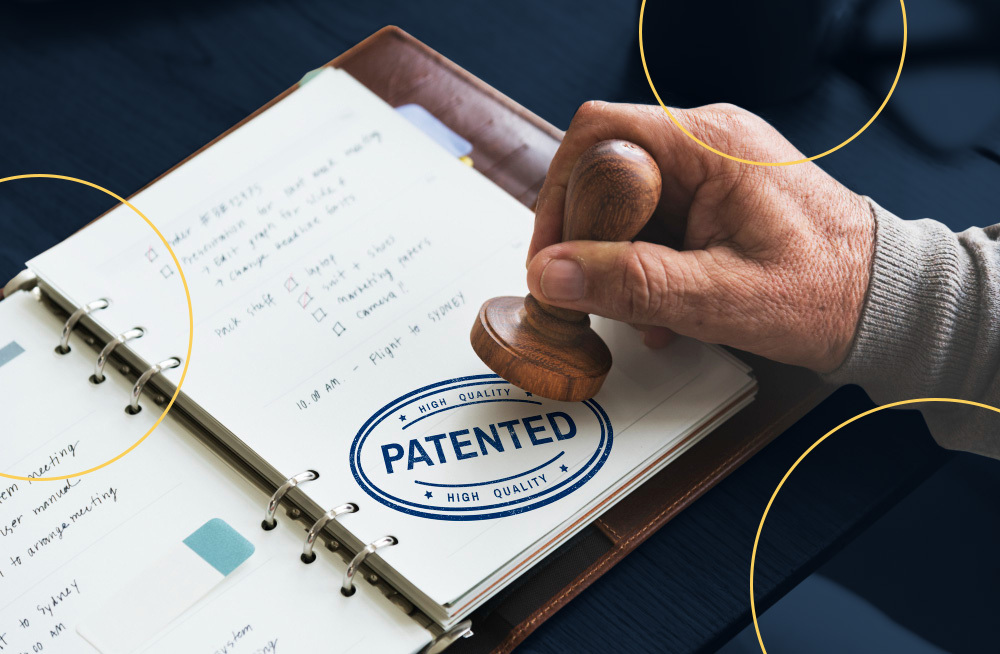Innovation and creativity are the driving forces behind groundbreaking evolution in the fast evolving world. Discovering groundbreaking advancement through exceptional creativity and innovation is a remarkable achievement. Inventors, innovators, entrepreneurs, any individual, or even you, can take part in the progressive innovations that one has to offer. That being said, you wouldn’t want your invention or intellectual property being stolen by other individuals or companies without your permission or a patent license. Patents play a vital role in protecting your valuable innovations, ideas, and designs, ensuring that innovators can reap the benefits of their hard work and dedication. In this article, we will delve into what a patent is, how it works, and how you can get one in the Philippines.

What is a Patent?
A patent is a legally granted exclusive right that is given to an inventor or assignee by a government authority- in the Philippines, it’s the Intellectual Property Office of the Philippines (IPOPHL) to protect an inventor’s new and useful invention. It provides the inventor with the exclusive right to prevent others from making, using, selling, or importing the invention in the Philippines without their permission for a limited period of time.
A patent in the Philippines follows the same basic principles as in other countries. A patent is a form of intellectual property protection that encourages innovation by granting inventors certain rights over their inventions. By obtaining a patent, inventors can have a monopoly over their invention, allowing them to commercialize it and prevent others from exploiting their idea without authorization.
Patents in the Philippines have a maximum duration of 20 years from the filing date, subject to the payment of annual maintenance fees. During this period, the patent holder has the exclusive right to exploit the invention commercially and can take legal action against anyone violating their patent rights.
The criteria for your innovation to be patentable
To be granted a patent in the Philippines, the invention must meet the criteria of novelty, inventive step, and industrial applicability. The invention must be new, involve an inventive step that is not obvious to a skilled person in the field, and have practical utility in any industry. Certain subject matters, such as scientific theories and mathematical methods, may be excluded from patentability.
Novelty: The invention must be new, meaning it should not have been publicly disclosed or made available to the public anywhere in the world before the filing date of the patent application. It should also not be part of the prior art, which includes information that is publicly known or available.
Inventive Step or Non-Obviousness: The invention must involve an inventive step, meaning it should not be obvious to a person skilled in the field of technology related to the invention. It should possess a level of inventiveness that goes beyond mere modifications or combinations of existing knowledge or techniques.
Industrial Applicability: The invention must be capable of industrial application, meaning it should have practical utility and can be produced or used in any industry.
An important note to consider: Certain subject matters may be excluded from patentability in the Philippines. These include scientific theories, mathematical methods, computer programs, methods of treatment of human or animal diseases, plants and animals other than microorganisms, essentially biological processes for the production of plants or animals, and aesthetic creations.
How Do Patents Work?
Patent works around the world similarly. But depending on where you live, the process is specific to the laws and regulations of your country. In the Philippines, here is how patents work:
- Invention
The process begins with the creation of a new and useful invention. The invention can be a technological innovation, a process, a machine, a composition of matter, a design, or certain types of plants.
- Patent Application
The inventor or assignee must file a patent application with the Intellectual Property Office of the Philippines (IPOPHL). The application should include a detailed description of the invention, claims defining the scope of the invention, and any necessary drawings or diagrams.
- Publication
After filing, the patent application is typically published by the IPOPHL after a certain period, usually 18 months from the filing date or priority date. This publication allows the public to be aware of the invention.
- Patent Examination
The IPOPHL examines the patent application to determine if the invention meets the patentability criteria, which include novelty, inventive step, and industrial applicability. The examiner reviews the application, conducts a search for prior art, and assesses the invention’s uniqueness and compliance with patent laws in the Philippines.
- Patent Grant or Rejection
Based on the examination results, the IPOPHL decides whether to grant or reject the patent application. If the application meets all requirements, a patent is granted. If the application is found deficient or fails to meet the patentability criteria, the examiner may issue an office action requesting amendments or reject the application. The applicant can respond to the office action and address any concerns raised by the examiner.
- Patent Maintenance
Once the patent is granted, the patent holder is required to pay annual maintenance fees to keep the patent in force. Failure to pay the fees may result in the patent being considered lapsed or revoked.
- Enforcement and Protection
With a granted patent, the patent holder has exclusive rights over the invention in the Philippines. They can take legal action against any individual or entity that infringes upon their patent rights, seeking remedies and damages through the legal system.
How To Get a Patent in the Philippines?

- Patent Search
The very first step before sending a grant for a patent is to search existing patent documents which can save you time and effort. See which patents might be similar to yours or if your patent meets the patentability criteria.
- Online Application / In-person Application
Online Application: For online applications, you can skip the lines and file your grant for patent application using IPOPHL’s electronic facility here: Online Application
In-person Application: For inventors with patent applications exceeding 250 pages, see the requirements below:
a. Patent Application Form: Fill out 3 copies of the official patent application form provided by the IPOPHL, providing accurate and complete information about yourself and your invention. You can download the patent application form here.
b. According to IPOPHL, attach and send the following:
- Specification and description of the patent:
a. The Title
b. A brief statement of its nature and purposes
c. Brief explanation of the drawings, if any
d. Complete and detailed enabling description
e. Distinct and explicit claim or claims which the applicant seeks to be protected
f. Abstract of the invention
c. Drawings of the invention
- Application submission and payments
After preparing the application requirements, submit the documents and pay the following fees at the IPOPHL’s cashier:
| Type | Small Entity (PHP) | Big Entity (PHP) |
| Filing Fee | 2,000 | 4,320 |
| Claims in excess of five (5) | 180 | 360 |
| Publication | 920 | 960 |
| Substantive Examination | 2,010 | 4,200 |
| Letters Patent Certificate | 600 | 1,200 |
| 2nd Publication | 920 | 960 |
*Small entity: with 100M worth of assets or less | *Big entity: with more than 100M worth of assets
Note: Total charges may vary depending on the number of claims, classes and embodiments applied. All fees are subject to 1% Legal Research Fund (LRF) as required by R.A. 3870. If the fee is below P 1,000.00, the LRF is P 10.00.
The Grant of Patent Process in the Philippines
| Stage | Cost (Small Entity) | Cost (Big Entity) | Process Duration |
| Filing Fee (up to 5 claims) | Php 2,000.00 | Php 4,320.00 | – |
| Formality Examination | – | – | – |
| Prior Art Search | – | – | – |
| Publication for Opposition | Php 920.00 | Php 960.00 | 18 months |
| Substantive Examination | Php 2,010.00 | Php 4,200.00 | – |
| Issuance of Letters Patent | Php 600.00 | Php 1,200.00 | – |
| Publication of Granted Patents | Php 920.00 | Php 960.00 | – |
Note: The process duration for the formality examination, prior art search, substantive examination, and issuance of letters patent certificate stages may vary depending on factors such as incomplete documents/requirements, failure of the applicant to respond, opposition to the patent, and the volume of search results and workload at the time. Therefore, no specific duration is provided for those stages in the table.
Patent Protection: 20 years from filing date
Minimum cost estimate per patent: Php 6,500.00 (Small Entity) or Php 11,800.00 (Big Entity)
Average Processing Time: 48 months
Conclusion
Obtaining a patent for your business innovation is crucial for your intellectual property. First of all, it places your business in an advantageous position in the market. It grants you exclusive rights, allowing you to protect your invention from being used or exploited by other competitors without your permission or a license. With zero to none competitors in the competitive landscape, a patent can competitors from easily copying or replicating your invention. This can attract potential investors and partners in investing to your innovation. Getting a patent also enables you to commercialize your invention and generate revenue through licensing or selling it.









